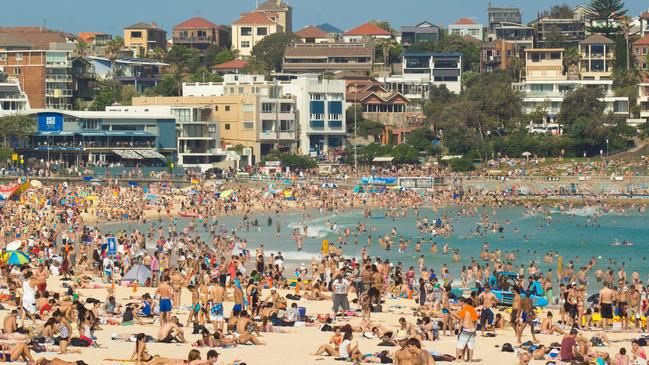Nation’s growing to start slowing but we’re still headed for 31 million in next decade
Our population is projected to rise to 31.3 million by 2035, Treasury has forecast, with stronger-than-expected net overseas migration resulting in a larger Australia than previously expected.

Our population is projected to rise to 31.3 million by 2035, Treasury has forecast, with stronger-than-expected net overseas migration resulting in a larger Australia than previously expected.
But despite an anticipated increase of 4.2 million people, population growth over the next decade is expected to slow from its current rate of 2.1 per cent to 1.2 per cent.
Released on Friday, Treasury’s annual population statement also projected the nation’s fertility rate – now at record lows of 1.48 births per woman – to gradually return to, and stabilise at, 1.62 by 2031-32.
“As the fertility rate moves towards its long-run level, and the number of potential parents grows with the population, annual births are forecast to increase to 352,000 by 2034-35,” the statement said.
At the same time, the statement warns the ageing of Australia’s population will “continue to present a demographic challenge”, with the median age projected to jump from 38.3 years now to 40 years within a decade. Just 20 years ago, the median age was 36.1 years.
Mortality rates also remain higher than their pre-pandemic averages, with the number of deaths at 184,000 last financial year still 12.9 per cent above pre-pandemic levels, the research found, owing to excess deaths from Covid-19. “The effect of Covid-19 on mortality is projected to continue declining over the next few years, with mortality rates returning to pre-pandemic trends from 2028-29 onwards,” the Treasury statement said.
Western Australia and Victoria are projected to be the fastest-growing states, the statement finds, whereas Tasmania and South Australia are projected to be slowest.
According to Treasury’s forecasts, Greater Perth will be the fastest-growing part of the country over the next decade, forecast to record 17.7 per cent growth, and displacing Melbourne, at 17.4 per cent.
In the 2023 statement, Greater Melbourne’s 10-year growth was 20.4 per cent, while Greater Perth’s was 16.5 per cent.
The combined population of capital cities is projected to continue to grow at nearly twice the rate of the non-capital city areas of the states and territories through to 2034-35




To join the conversation, please log in. Don't have an account? Register
Join the conversation, you are commenting as Logout